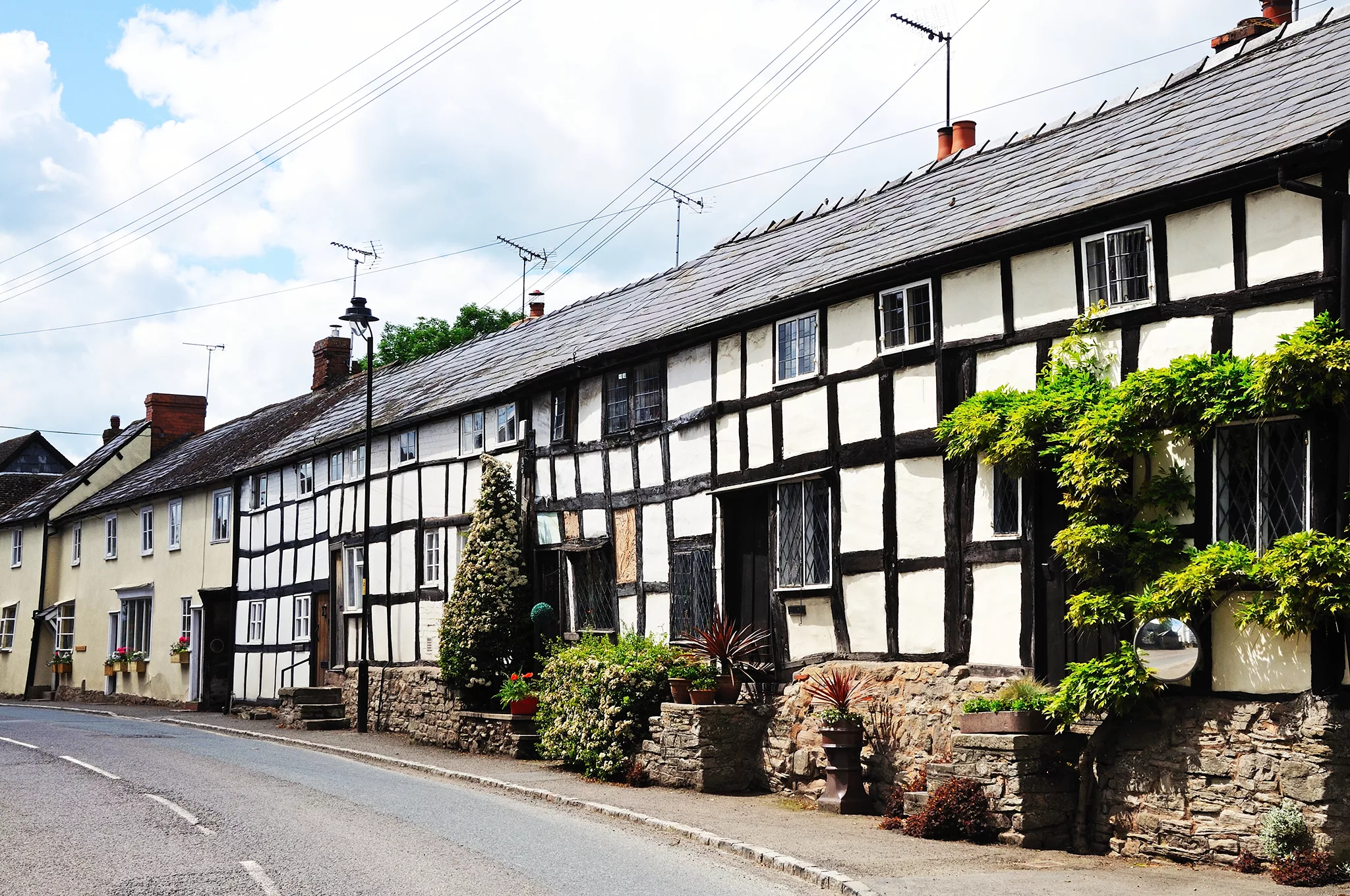The Black and White Trail
North Herefordshire’s Black and White villages are a fascinating historical monument of the area, with the half-timbered houses dating back to medieval times.
The houses’ black oak beams are exposed on the outside, with white painted walls between.

The circular trail begins in Leominster and spans 40 miles, winding gently through the villages of Weobley, Pembridge, Eardisley, Dilwyn, Kinnersley, Sarnesfield, Lyonshall, Kingsland, Kington, Eardisland, and then back into Leominster.
This delightful self-drive trail brings you on a tour of the charming scenic villages of North Herefordshire, with the characterful villages making for a lovely stroll.
Cosy up in the delightful tea rooms, rural pubs, stunning art galleries and village shops which can be found along the trail, and bringing your camera is a must if you plan to explore the castle ruins, country churches, manor gardens and historic houses.
North Herefordshire is known as cider country, so expect to be met with different seasonal beauty! A springtime walk will accompany you with sweet apple blossoms floating in the air, whilst an autumntime visit will bring you the harvest- the perfect time to visit local cider makers and breweries to see how the product is made first-hand.
The completely rural landscape allows you to enjoy the tranquil peace and sheer beauty of the villages and surrounding countryside, and the hidden gems found within all the villages make the Black and White Village Trail a truly unique experience of a slice of the UK incomparable to anywhere else.
Eardisland
Sitting on the grassy banks of the River Arrow, Eardisland is simply sublime. A classic English village, there’s many picturesque Black and White houses here, including some thatched beauties. Stand on the stone bridge to see the Old School House (complete with Whipping Post!) and the Manor House opposite.
A short distance on the left, along the Leominster Road, see the fine Staick House which dates from around 1300. It was originally a Yeoman’s hall and later became the Mote House where legal matters were dealt with.
Pembridge
In medieval times, Pembridge was a prosperous place, enjoying the patronage of the powerful Mortimer family. The timberframed buildings which line the main street are quintessentially English, including some fine alms-houses.
Arguably the largest of the villages on the Trail, there is plenty to see and do here.
Lyonshall
Lyonshall has a delightful church which sits alongside the ruins of the moated castle on the hillside overlooking the village. To the south west, there is a well-preserved section of Offa’s Dyke. The original village lies half a mile away - following the Black Death in 1348/50, survivors rebuilt the village a good distance from its original site, meaning that the church became ‘stranded’! There’s a cluster of black and white cottages here to enjoy.

St Michael and All Angels’ Church, Lyonshall .
Photo credit: Chrishesmith

The Magpie sculpture in Weobley

Weobley Castle
Eardisley
Eardisley is celebrated for its fine church font. Elaborately carved, it is the work of the Herefordshire School of Romanesque Sculpture.
The former pub, The Tram Inn takes its name from the early 19th century horse-drawn tramway which brought Welsh coal to the village and a mile or so away at Hurstway Common, you can visit the Great Oak, an enormous 900-year-old hollow tree, thought to be one of the oldest and largest oaks in England.
Weobley
Pronounced ‘Weblee’, the village was once famed for its wool making and then its gloves and ale. Its lack of transport links meant that the industrial revolution passed it by, so farming is still very important here today.
Park in the centre of the village and follow the Heritage Trail to see fine examples of timber-framed buildings, including cruck cottages and Wealden houses, as well as the place where Charles I stayed during the Civil War.
Wander over to the fine church of St Peter and St Paul to see its 185 feet high spire, which is supported by flying buttresses, and then stroll around the moat and earthworks of Weobley Castle.
Another particular favourite is the pink and black house.
Dilwyn
A very old settlement with a traditional village green, encircled by black and white cottages. The name Dilwyn means shady or secret place, which is very apt for its setting in a wooded hollow.
It’s half-timbered black and white houses sit in a backdrop of beautiful rural landscapes, bustling wildlife, and ancient buildings, with settlers in the area dating back to over 1000 years ago.



